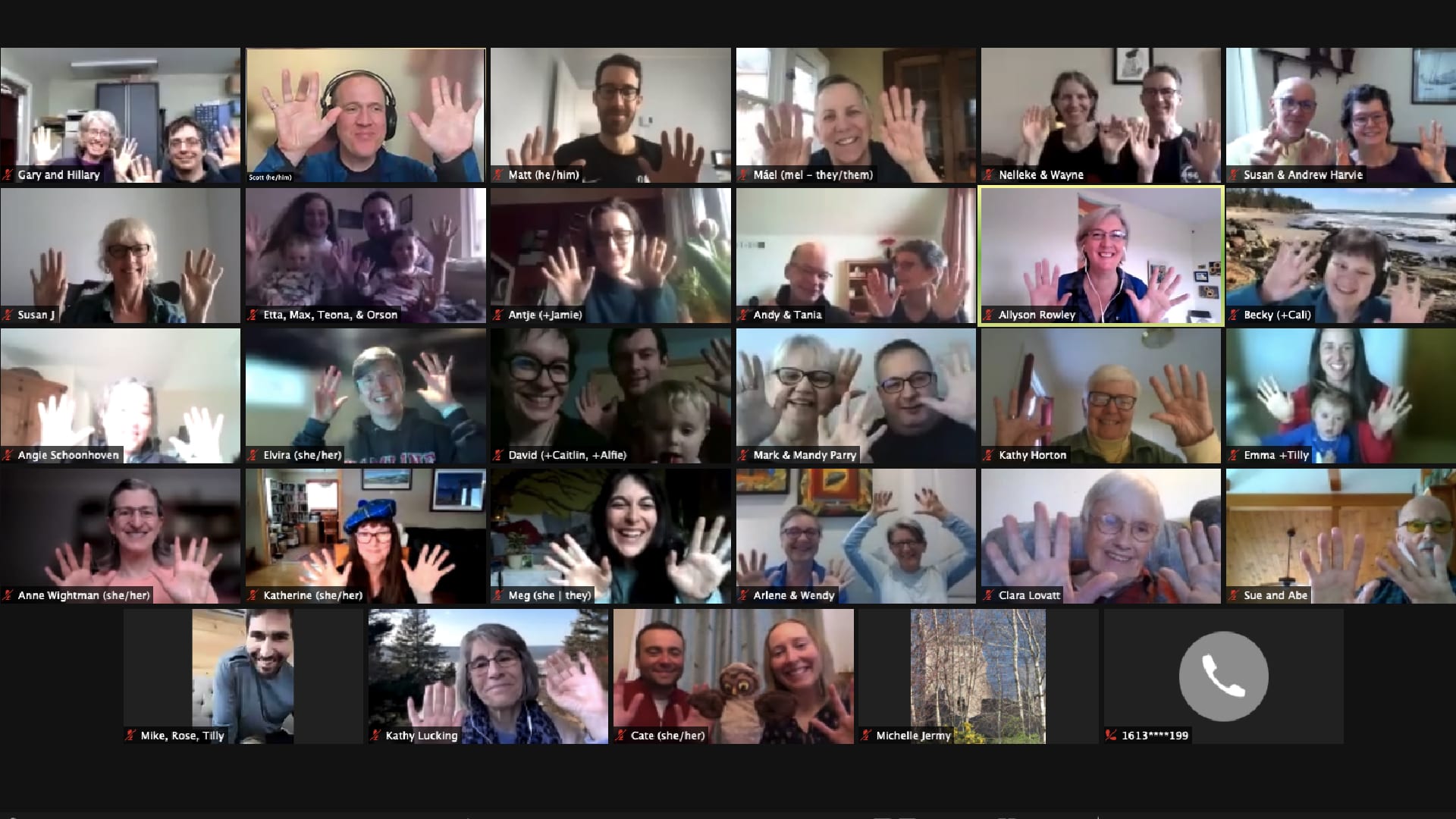We published the bulk of this blog post early in the pandemic on March 26, 2020. Now, well over a year later, it still holds true. Because Treehouse Village has played such a big part in our members’ lives, here is an updated version.
Our members, who span three countries and two continents, have found themselves under various levels of government lock-down, with children sent home from school indefinitely, work disrupted, and social lives upended.
Not only have our members found that working on our development is an excellent distraction from the boredom of social isolation, we’ve also been able to draw emotional support from each other in these trying times.
In Bridgewater, Nova Scotia, the location of our cohousing development, after a provincial state of emergency was declared on March 22, 2020, the level of restrictions fluctuated dramatically as the epidemiology of COVID-19 in our province changed. Thankfully, our Treehouse community is well-positioned to weather this storm. In the face of the pandemic, our progress hasn’t stalled: instead, we’ve pulled together and are barrelling forwards with renewed commitment to our vision of building a resilient neighbourhood. In the past year we have more than doubled the number of Equity households; we are now 80% pre-sold. We have finalized the designs of our homes and the Common House, obtained our Development Agreement with the Town of Bridgewater, and are well on the way to groundbreaking this summer.
Not only have our members found that working on our development is an excellent distraction from the boredom of social isolation, we’ve also been able to draw emotional support from each other in these trying times.
But how exactly have we been able to keep the “social” in “social distancing?” Our success rests on the strong foundation that we’ve built together over the past years.
1 – We check in with each other
We start and end each of our meetings with a check-in round. This gives each person an opportunity to express how they are feeling as they begin and leave a meeting or community gathering. Checking in allows us to be sensitive to each others’ emotional states. If, for example, I know that you’ve rushed to this meeting from a doctor’s appointment where you received important news, I’m going to be more understanding if you appear distracted.
As more and more of our members had their daily lives interrupted by COVID-19, these check-in rounds became an important way for us to vent our fears and frustrations, to realize that we were not alone with our anxieties, and to reflect on our own mental health.
2 – We are committed to compassion
All members of our community have agreed to uphold a set of Community Standards, which we established together. These community standards govern how we interact and work with each other, both in meetings and beyond. Key among these standards is a commitment to practising Non-Violent Communication, being gentle with each other, and being forgiving to ourselves and others.
Our community’s commitment to compassionate, empathetic interaction has proven invaluable during these uncertain and anxious times. Our regular reminders to be kind to ourselves and each other took on a new poignancy as some of our members navigated capacity to work on the project because of increased childcare demands, unstable home internet connections, and increased stress in other areas of their life.
Being sociable now requires a bit more forethought and intentionality. Luckily, our members are well-versed in the idea of intentional community.
3 – We are intentional about community-strengthening
During this time of social isolation and social distancing, we’re less likely to have accidental or spontaneous social interactions. Being sociable now requires a bit more forethought and intentionality. Luckily, our members are well-versed in the idea of intentional community.
One of the primary draws of cohousing is the idea of living with people who actively invest in the community. We’ve been working with a team of professionals to ensure the physical layout of our neighbourhood maximizes potential for social interactions – but we’ve also been intentional about building community throughout the entire development process.
Our members have been hosting regularly scheduled virtual events for casual socializing such as coffee hours, a book group, and a meditation group as well as one-time events such as our Birds of a Feather event, designed to engage members of all ages and asynchronous events such as our Colour Challenge. As a result, many of us have found that interactions with our future neighbours have been barely affected by the pandemic, when many of our other social circles have been struggling.
4 – We are no strangers to remote participation
Our members currently live as far away as British Columbia, Minnesota, and England, so we were using Zoom well before the pandemic made it a necessity! As such, we have a well-established Zoom etiquette, including hand gestures for a range of common phrases such as, “I can’t hear you,” or, “I agree.” We even have a couple of in-house Zoom experts, who support our membership in Zoom usage, and help us with things like sending us all to virtual break-out rooms and recording and editing selected meetings for those who were unable to attend at the time. Sociocracy, our form of governance, makes online (and in person) meetings a whole lot less chaotic, because we speak one at a time in rounds.
5 – We look to the future
Treehouse Village as a whole is premised on hope: hope that we can design and build a neighbourhood that encourages us to have a lighter footprint on the earth, be more connected with our neighbours, and be healthier and happier as a result. This is surely the most critical aspect of remaining resilient during the current pandemic: maintaining hope that, together, we are building something vibrant for our future, and our children’s future.

Leave a Reply